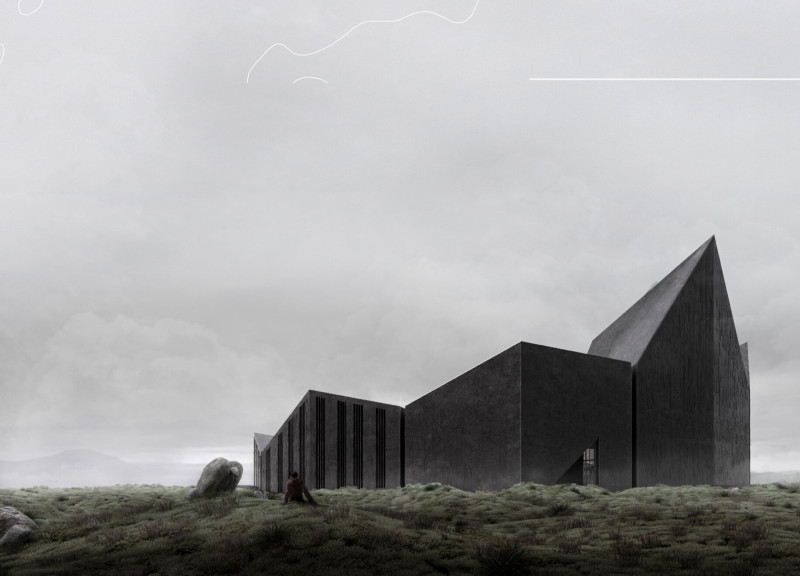5 key facts about this project
The Iceland Volcano Museum is situated in a landscape that highlights its volcanic heritage. Designed to function as both an educational and cultural center, the museum focuses on the unique geological history of Iceland. The concept revolves around traditional Icelandic architecture, featuring layouts that respond to local building practices while meeting modern needs.
Function and Layout
The layout of the museum divides spaces based on their use. Public areas, like exhibition spaces and a cafeteria, are placed to encourage visitor movement and interaction. This thoughtful arrangement makes it easy for guests to explore the exhibits while engaging in communal activities. In contrast, the back-office area is located in the southern part of the building. It includes offices, meeting rooms, and an open workspace, ensuring that administrative functions remain distinct from visitor areas.
Natural Light Integration
Natural light is a key feature of the design. Each section of the museum is carefully arranged to allow sunlight to enter throughout the day. This not only decreases the need for artificial lighting but also creates a pleasant atmosphere inside. The flow of light enhances the experience for visitors, making the exhibits more inviting and engaging.
Materiality and Symbolism
Lava rock panels are the primary materials used in construction. They provide strength and reinforce the connection to the volcanic landscape. The courtyard is an important element, showcasing lava stone that reflects Iceland’s geological diversity. Features designed to capture the northern lights add visual interest, linking the museum's structure to its natural environment in a meaningful way.
The thoughtful design allows the museum to reflect the beauty and history of Iceland while creating a welcoming space for all. Visitors can immerse themselves in the story of the land and its past.























































